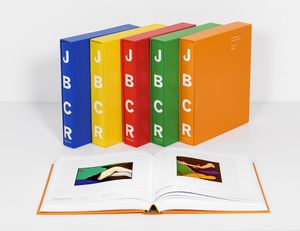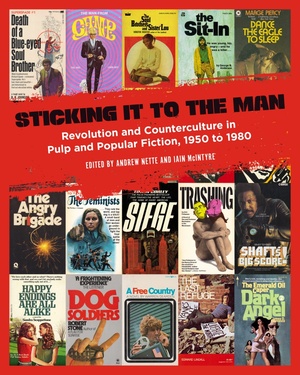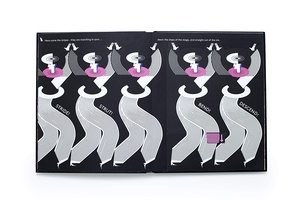


Book of the Day > John Baldessari: Catalogues Raisonnés
Book of the Day > In remembrance. John Baldessari: Catalogues Raisonnés. Published by Yale University Press. "The pioneering conceptual artist John Baldessari (1931-2020) began his career as a painter in the 1950s, but in the subsequent decades he expanded his practice in a new and groundbreaking direction by juxtaposing texts with found photography or appropriated images. These texts questioned the nature of art and the art-viewing experience, suggesting new meanings for the images they accompanied. This interaction of words and images remained a critical aspect of Baldessari's work, even as he branched into other media, such as site-specific installations, drawings, video, sculpture, prints, and multiples."

Book of the Day > Sticking it to the Man; Revolution and Counterculture in Pulp and Popular Fiction, 1950 to 1980

Book of the Day > Josef Koudelka: Gypsies

Book of the Day > Doug Meyer: Heroes: A Tribute

Book of the Day > Bruce Weber: All-American XIX: No Small Thing, Desire

Book of the Day > Shirley Baker

Dario's Holiday Gift Picks!

Margaret Kilgallen: that’s where the beauty is. Foreword by Heidi Zuckerman. Text by Courtenay Finn, Jenelle Porter. Impure Americana, a slightly acidic nostalgia that evoked sideshows, tramp art and old travel posters with infusions of feminist wit. –Roberta Smith, New York Times. Margaret Kilgallen: that’s where the beauty is. is published on the occasion of Kilgallen’s first posthumous museum exhibition, and the largest presentation of her work in more than a decade. Using the artist’s exhibition history as a chronological tool, that’s where the beauty is. examines Kilgallen’s roots in histories of printmaking, American and non-Western folk history and folklore, and feminist strategies of representation, expanding the narrative around her work beyond her association with the Bay Area Mission School and the "Beautiful Losers" artists. Kilgallen’s graphic, schematic style came from a deep engagement with the handmade in wildly divergent forms—from folk art to letterpress printing to freight train graffiti, among many other sources. “I like things that are handmade and I like to see people's hand in the world anywhere in the world,” she said, embracing the idiosyncrasies and imperfections that come from hand craft. “I think that’s where the beauty is.” Kilgallen’s work, in form and content, celebrates the handmade, making heroes and heroines of those who live and work in the margins and challenging traditional gender roles, hierarchies and mainstream culture. This publication offers a comprehensive look at Kilgallen’s work, revisiting the ongoing legacy and idiosyncratic spirit of one of California’s most innovative artists. Published by Aspen Museum of Art. $ 49.95





Eliza's Holiday Gift Picks!
Gaechter + Clahsen: Fünf Finger Föhn Frisur. "A person’s hair may be likened to the top of a mountain. But while mountaintops are often shrouded from our eyes by clouds around them, a person’s top is almost always visible—especially in latitudes that have given up the daily use of bonnets, hats and headscarves. Hence the understandably heavy pressure on people’s heads—to get the hair just right. Over the course of several decades, photographer Peter Gaechter shot a wide array of hairdos for Zürich hairdresser Elsässer Pour Dames, tracking the changes in—and revivals of —hairstyles in late 20th-century Switzerland. The present publication brings together a selection of his photographs from the catalogues on display at these upmarket salons, showing the latest hairstyle trends from the 1970s to the 1990s. These sculpturesque cuts and coiffures, which were to be reproduced à l’identique on the customers’ heads, were also telltale signs of the times. Whether a punk or “Cold War Kids” cut, a “five-finger” blow-dry, feathery “Charlie’s Angels” wings or “Old Hollywood” coiffure—the multifarious hairstyles of local beauties, “It girls” and actresses featured in this book reflect the “why not?” whateverism of liberal consumer culture as well as concrete changes in society, e.g. in the sudden apparition of a clunky cell phone included in the picture frame as a pixie cut accessory. Gaechter’s photographs also hark back to an age in which photography was still infused with a spirit of professionalism. There are no snapshots here, no affectations of an amateur aesthetic, no strategically trashy elements—Gaechter's pictures target a clientele aspiring to distinction, as could once be said of the photographer’s craft as well." Published by Edition Patrick Frey. $ 60.00

Lee's Holiday Gift Picks!

















